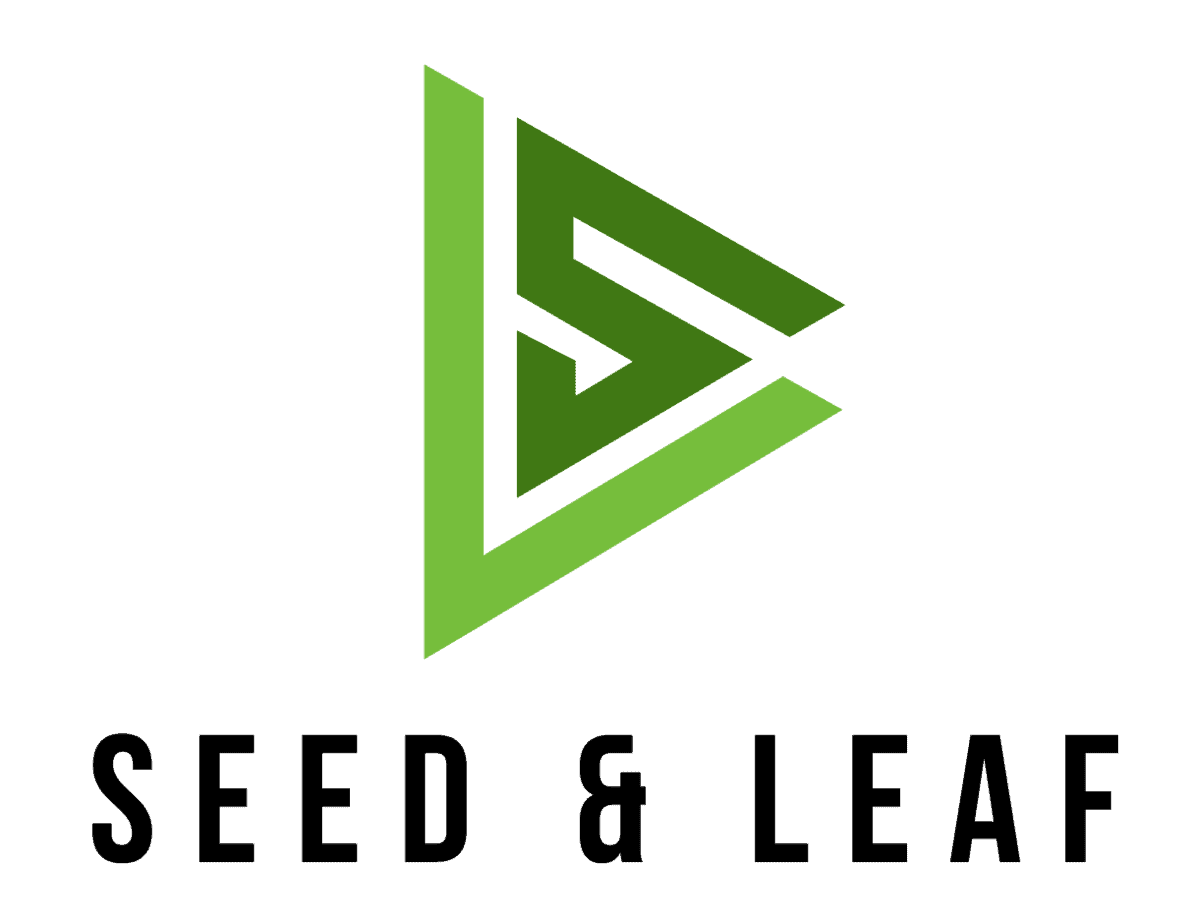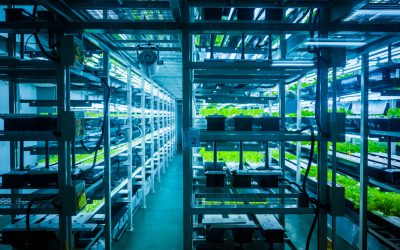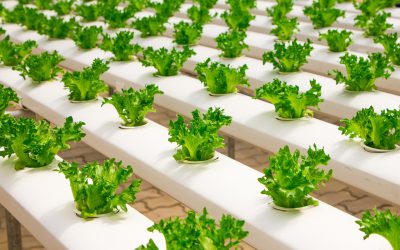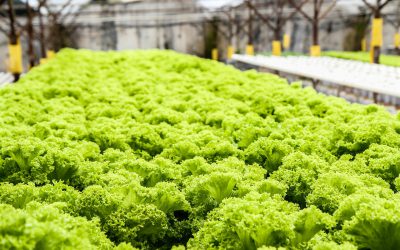Written by Jared Anderson
September 18, 2019
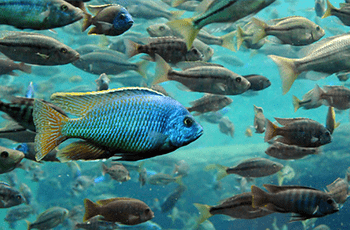
The vast majority of people have never heard of aquaponics. I’m sure many are immediately turned-off when they hear that fish poop is a key element in the system. Well if you’re not one of them, you’ll find out that this symbiotic system is a fantastic method for growing healthy and nutritious fruits, vegetables and herbs.
What Is Aquaponics?
One of the oldest forms of plant cultivation and fish raising is aquaponics. It is a method that combines aquaculture (the raising fish) and hydroponics (growing plants). Aquaponics in a perfect representation of symbiosis, with the waste from the fish feeding the plants, and in return, the plants cleansing the water making it safe for the fish. These close looped systems do require some human assistance, but in large, it is a great example of how all of nature is simply a process keeping itself in balance.
Aquaponics takes all the positive aspects of aquaculture and hydroponics and eliminates the negative ones. For instance, in hydroponics, valuable nutrients are needed to feed the plants. The systems also require periodic flushing due to generated wastes. In aquaculture, periodic flushing is also necessary due to the buildup of ammonia-rich waste that can pollute the water and kill the fish residing within. Aquaponics eliminates the need for periodic flushing, expensive nutrient solution, and issues regarding waste disposal. The nitrogen-rich waste from aquaculture is an excellent alternative to expensive food for the plants. This process completes the nitrogen cycle, leaving the water in the system naturally cleansed, eliminating the need for periodic flushing.
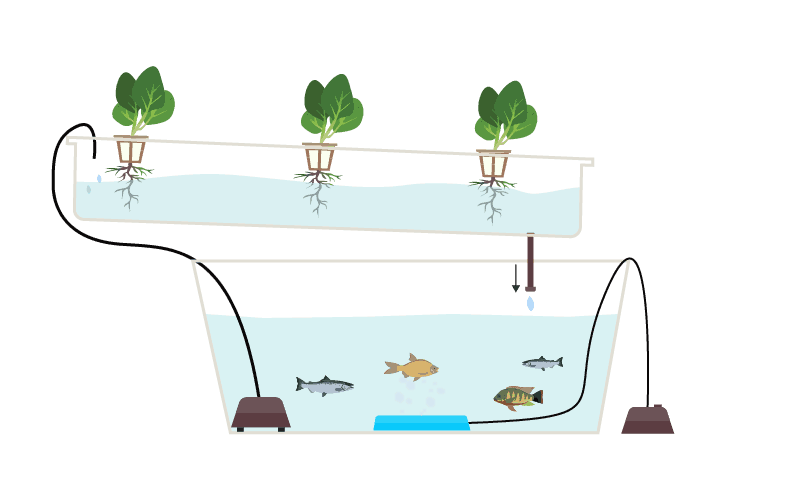
What Are The Benefits Of Aquaponics?
The number of people using aquaponics is continuing to grow year over year, but is still largely unknown by most. One of the major issues that aquaponics addresses is the issue of food safety. Most people prefer eating organic foods, but certification is not always reliable. Often, once an inspector certifies a farm or food producer of being organic, there is rarely any follow-up to assure that organic food continues to be produced. There is a risk that once the certification is obtained, manufacturer and food producers may no longer follow strict organic farming and growing methods. One reasonable indication for this is the huge discrepancy between actual organically grown foods and one marketed as “organic” foods sold in the market.
With aquaponics, ‘cheating’ is simply not possible. Aquaponic farmers cannot use any herbicide or pesticides anywhere in the system. Even the smallest amount could risk wiping out all of your fish. That includes “organically-approved” pesticides. These pesticides, even with a certification of being organic, are still toxic and can kill the fish.
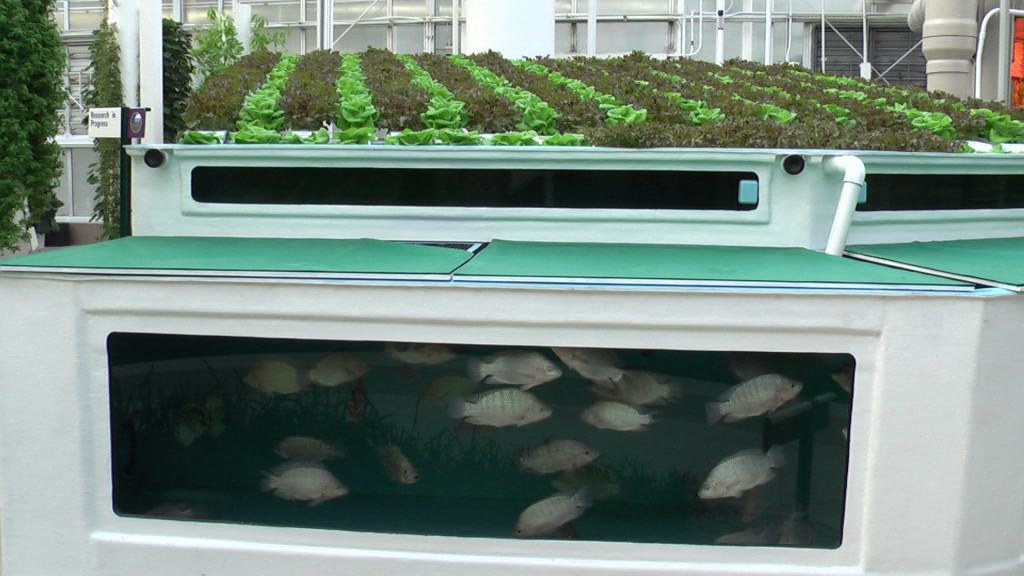
Along with the risk associated with coming in contact with our food, traditional fertilizers carry toxic chemicals that can mix with the soil, seep into the groundwater, and pollute larger bodies of water through runoff. Most organic fertilizers come from animal sources. This brings the risk of carrying pathogens such as Salmonella and E. coli. Eating vegetables grown with these fertilizers increase the risk of food born illness. Traditional farming must use fertilizers in an attempt to supplement the nutrients (or lack there of) into the ground. There is no need for additional fertilizers with aquaponics because the nutrients are regularly replenished. In fact, as long as the fish are alive and well, there will be a continuous supply of plant food.
One of the many advantages that can be obtained using these techniques are larger yields with less time. In fact, some growers report reaping up to 6 times more produce per square foot of planted area compared to land farming.
Traditional land farming wastes a lot of water. More than 70% of the fresh water usage in the United States is used for agriculture. Much of the water stays in the ground or evaporates; only a small percentage is eventually absorbed by the plant roots. In aquaponics, it may seem that there is a lot of water used, with both a tank for fish and the plants. However, the water is being re-circulated, and not much leaves the system. In fact, aquaponics uses 90% less water compared to water usage in traditional farming methods. Because of this same reason, aquaponics is one of the best farming method to use during droughts or in places where water is scarce.
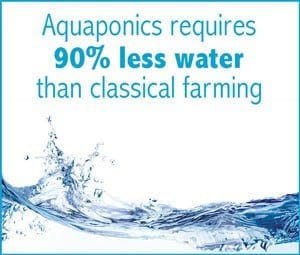
Types Of Aquaponics Systems
A popular DIY aquaponic system (as shown below) take an IBC food grade tote and cuts the top portion off to become the grow bed. With the addition of a few accessories, you can have a high quality backyard (or garage) aquaponics system. It is perfect for the production of food for a household. This system has been tried and tested in various corners of the world and proven to be a success. It makes for a great family project/hobby!

There are many different types of systems used in setting up an aquaponics garden. Some of the most common ones used by a lot of backyard gardeners are media-filled beds, NFT (nutrient film technique), and DWC (deep water culture).
Media Filled Beds
These are the simplest and most common aquaponics systems. Containers are cleaned and filled with rock media, such as expanded clay and other similar materials. Plants are grown in this kind of medium. A pump is used to bring water from the tank where fishes are raised in the press filled beds. Water either runs in a continuous flow over the rocks or floods the media beds, which are then drained at a later time.
For systems using the flood drain cycles, it can be achieved through several means. There are three primary methods through which this sequence can be made – using a timed pump, using an auto-siphon and using a simple standpipe.
Some media-filled bed systems use a timer. It sets when to flood the beds with water from the fish tank by turning on the pump and when to drain it by turning off the pump. A standpipe is placed in the grow beds to control flooding levels.
Flooding and draining the grow beds can also be performed through the use of an auto siphon
Put on the beds and the pump is allowed to run continuously. The siphon would periodically drain off the water from the grow beds and return them into the fish tank.
A standpipe in the bed and a continuously running pump is also one way to flood and drain.
Nutrient Film Technique (NFT)
This technique is more commonly used in hydroponics but also works well in aquaponics. In NFT, water filled with nutrients (from the fish tanks) is pumped into the plants through small gutters. These channels are enclosed, and the water flows through it in fragile films. The plants are in net pots (small plastic cups), and their roots are allowed access to the thin films of water for nutrient absorption.
This technique is only recommended for certain plants. Plants like leafy greens would thrive well with NFT. Plants too large for plastic cups and with extensive and invasive root systems are not recommended for this system. Plants that grow too heavy to hang in plastic containers are also not for the NFT.
Deep Water Culture
This type of system works by floating the plants on the surface and the roots dangle into the water. It is the more commonly practiced aquaponics technique used for commercial growing. There are various ways to achieve this. Some growers place the plants on foam rafts and allow them to float across a tank continuously filled with water from the fish tank. The water is cycled continuously up to the plants and down into the fish tank.
Chift Pist System
It is one of the most popular DIY aquaponics systems. A sump tank houses water, which is pumped into the reservoir where the fishes are. As the water is pumped into the fish tank, the water level rises until it overflows. The excess water flows out of the reservoir and into the grow beds. Water that gets into the grow beds eventually drains off back into the sump tank, an auto-siphon is placed within the grow bed to control the flooding and draining.
Often, growers incorporate an SLO for the shift post system. An SLO is Solids Lift Overflow. An overflow pipe is installed into the fish tank, which goes down into the base of the fish tank. It will draw up all solids (i.e., fish waste) that settle down at the bottom and draw it up into the grow beds.
There are many advantages to this system. One benefit is that the pump is situated away from the wastes and the fishes. It is located in the sump tank. This way, the pump can perform better without disturbing the fishes and agitate the wastes, which can cloud the water. Also, this system allows for consistency in the water level of the fish tank, which lessens the stress on the fishes. It is also the most recommended for great fish tanks as it makes water circulation and waste removal more efficient.
Aquaponics is an amazing way to grow healthy delicious food and can make for a great hobby for you and your family. If you’re not ready to build your own system, an easy way to get started growing aquaponically is through a simple desktop design like the ‘Back To The Roots’ Water Garden. It’s a fully functioning aquaponic system with the bonus of a new family pet 🙂 Click the link or image below to check it out:

Related Articles
The Complete Guide To Vertical Farming | What It Is and Why It’s So Important
With demands for fresh, locally sourced, non-GMO fruits, veggies, and herbs continuing to grow, the adoption of indoor vertical farms is increasing across the globe. Find out why, these farms are so important for the future of our food.
Nutrient Film Technique 101
The Nutrient Film Technique is one of many popular hydroponic growing techniques. In fact this method is deployed across both hobbyist gardens and large commercial grow operations.
A Deep Dive On Deep Water Culture Hydroponics Systems
What is Deep Water Culture or DWC hydroponics? Check out the benefits and how easy it is to get started growing using the DWC method.
